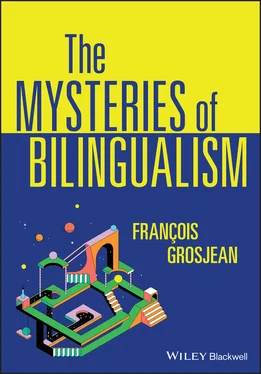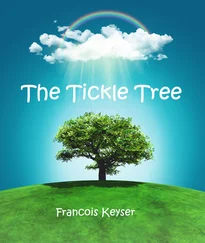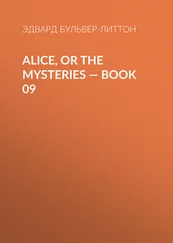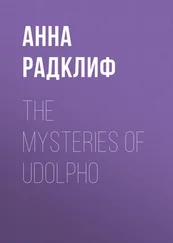The 2018 ACS found that 67.3 million inhabitants (native-born, legal immigrants, and illegal immigrants) spoke a language other than English at home (Zeigler and Camarota 2019). Among those people, some 63 million also knew and used English and hence were bilingual. This represents 20.55% of the population. If we add to this number bilingual children under 5 (not covered by the survey) as well as people who use a second or third language in their everyday lives but only English at home, then probably close to 23% of the population can be considered bilingual.
The percentage of bilinguals is definitely on the rise. Researcher Jeffrey Bloem at the University of Minnesota helped me extract the appropriate numbers from the census and ACS databases. For each year, we tabulated those who spoke a language other than English, as well as English to varying degrees, and we worked out a percentage based on the total population. The results are plotted in Figure 2.1.

Figure 2.1 The percentage of bilinguals, and of inhabitants who know no English, since 1980 in the United States.
As can be seen in the graph (dark grey function), there is a steady increase of the percentage of bilinguals between 1980 and 2018. Back in 1980, the percentage of bilinguals was 10.68% whereas in 2018, the last ACS survey for which we have data, it was 20.55%. Thus the percentage has practically doubled in 38 years. One will want to study the reasons for this constant rise since 1980. There is, of course, the arrival of new immigrants who learn English and hence become bilingual. Some maintain their languages from generation to generation and hence bilingualism continues. Other reasons may be the (re)learning of some older immigration languages, as well as of Native American languages, and of American Sign language. To these should be added the effort that is being made to allow children and adolescents to acquire and use a second language in the home, as well as more natural language learning opportunities in some schools with immersion and dual language programs.
Some might say that the increasing number of bilinguals goes hand in hand with an increase of inhabitants who know no English. The results of those who report that they do not know any English is plotted in the same graph (Figure 2.1; light grey function) and, as can be seen, the percentages remain very low throughout all these years. English is so important in the United States that close to 98.7% of the population know it, and use it in everyday life, according to the ACS results. The position of prominence that English has in the US is in no danger, but some room is now being made for other languages.
Bilingualism in the US is very diverse. English-Spanish bilinguals represent 61% of all bilinguals and hence Spanish is definitely America’s second language (41,460,427 speakers in 2018). Other important languages, but to a far lesser extent, are Chinese (3,471,604), Tagalog (1,760,468), Vietnamese (1,542,473), Arabic (1,259,118), French (1,232,173) and Korean (1,086,335). Bilinguals are not equally distributed across the nation. Some states contain proportionally very few (e.g., West Virginia, Mississippi, Montana, Kentucky) whereas others have a far greater proportion (e.g., California, Texas, New Mexico, New Jersey, New York, etc.). As for cities, the ones with the most bilinguals are Los Angeles, Houston, New York, Phoenix and Chicago.
Bilingualism in the United States has traditionally been transitional – a passage, over one or two generations, from monolingualism in a minority language to monolingualism in English. However, there is an increasing awareness that the country’s knowledge of the languages of the world is a natural resource that should not be wasted. Hence a growing number of families are fostering bilingualism either by making sure the home’s minority language and culture are kept alive or by encouraging their children to acquire and use a second language.
As we saw in the preceding part, Canada obtains data both on language knowledge and language use in its censuses. Concerning language knowledge, it is a person’s ability to speak the language(s) well enough to conduct a conversation. For a child who has not yet learned to speak, this includes languages that the child is learning to speak at home. 9Two questions in the 2016 census get at language knowledge, and the combined results show that 39% of the population report being able to conduct a conversation in more than one language, of which 17.9% report that the languages involved are English and French. It is important to note that these percentages concern actual bilinguals but also potential bilinguals as some do not actually use two languages in their everyday life, even though they know a second language well enough to do so.
To get at actual bilingualism, that is, the regular use of two or more languages in everyday life, one has to look at the results of the languages spoken at home, on the one hand, and at work, on the other. Concerning the home, 1019.4% of the population report speaking more than one language at home (this is a rise from 17.5% in 2011). The languages involved can concern the two official languages, English and French, or one of these languages along with a non-official language (aboriginal language or immigrant language). People with a non-official mother tongue who use a language other than their mother tongue at home usually adopt English or French as their main language or as a secondary language. Only 28.0% of people with a mother tongue other than English or French speak only their mother tongue at home. By comparison, 94.3% of people with English as their mother tongue and 83.1% of people with French as their mother tongue speak only their mother tongue at home.
Researchers Schott, Kremin, and Byers-Heinlein (2019) examined child bilingualism in the home based on the 2016 census. They found that 15.7% of children aged 0 to 4 grow up with two or more languages at home. The percentage varies, of course, according to the region or province in question, with the highest percentage in Northern Canada (29%), and the lowest in Newfoundland and Labrador (4%). Quebec and Ontario are close to the mean with 17%.
The 2016 census also examined the state of bilingualism at work. 11The proportion of workers who use more than one language at work was 15.4% in 2016, up from 13.9% in 2011. Were we to add the percentage of bilingualism at home and at work, we would obtain close to 35% of people who use two or more languages in their daily lives, without counting other activities though. But this percentage includes some people who are counted twice, once in the home and once at work, and so one needs to estimate a reduced combined percentage. For the 2016 census, collaborators at Statistics Canada could not help me with this, but for the 2011 census, Ms. Camille Bouchard-Colombe from the same bureau gave me an estimate of 26%. Since the level of bilingualism is higher both at home and in the work place in 2016, a fair estimate could be 28%. Thus, slightly more than a quarter of inhabitants in Canada are actual bilinguals.
It is interesting that there is a 11% difference between potential bilinguals (39%) and actual bilinguals (some 28%). This percentage, which can vary in size as we will see below, reflects the fact that some people can master two or more languages sufficiently to conduct a conversation in them but do not actually use them all on a regular basis. This is true in Canada but also in all other nations in the world.
In 2012, a survey conducted for the European Commission interviewed some 26,751 respondents in 27 member states of the European Union. The results appeared in a report that same year, Europeans and their languages (TNS Opinion & Social 2012 ). Even though not as a complete as a census with good language questions (but see above for the problems many have), it is a fine base to get a feel for the status of bi- and multilingualism in Europe. The report contains several sections and we will concentrate once again on language knowledge, and on language use, so as to be able to compare, when possible, the results with those from North America.
Читать дальше













